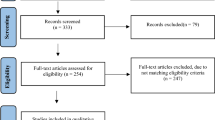Abstract
Purpose
We performed this study to determine whether the use of imageless navigation reduces revision rates after total knee arthroplasty (TKA).
Methods
Data of 1,121 consecutive primary TKA with a follow-up of one to six years were retrospectively analysed. Following the conversion of the standard technique from conventional to navigated procedures, these data included the last 342 conventional and first 779 navigated procedures performed in our clinic. Demographic and perioperative covariates were recorded. All patients were asked by post to report instances of revisions.
Results
Data of 1,054 patients (94 %) were complete. Mean follow-up was 3.9 years for conventional and 2.4 years for navigated operations. Cumulative revision rate averaged 4.7 % for conventional and 2.3 % for navigated procedures. Cox’s proportional hazard model was used to assess the effect of covariates on survival, resulting in significantly lower revision rates for older patients (p < 0.001) and for the navigated technique (p = 0.012). The reduced revision rate for navigated operations was mainly caused by a significantly reduced rate of aseptic implant loosening (1.9 % vs. 0.1 %, p = 0.024).
Conclusions
Our study showed lower revision rates when computer navigation was used. However, due to the retrospective uncontrolled design, further prospective trials will be necessary to further evaluate this effect.




Similar content being viewed by others
References
Bonutti PM, Dethmers DA, McGrath MS, Ulrich SD, Mont MA (2008) Navigation did not improve the precision of minimally invasive knee arthroplasty. Clin Orthop Relat Res 466(11):2730–2735
Callaghan JJ, Liu SS, Warth LC (2006) Computer-assisted surgery: a wine before its time: in the affirmative. J Arthroplasty 21(4 Suppl 1):27–28
Bonutti PM, Dethmers D, Ulrich SD, Seyler TM, Mont MA (2008) Computer navigation-assisted versus minimally invasive TKA: benefits and drawbacks. Clin Orthop Relat Res 466(11):2756–2762
Hoke D, Jafari SM, Orozco F, Ong A (2011) Tibial shaft stress fractures resulting from placement of navigation tracker pins. J Arthroplasty 26(3):504–508
Berend ME (2009) Computer-assisted TKA: greater precision, doubtful clinical efficacy: affirms. Orthopedics 32 (9):orthosupersite-24
Gothesen O, Espehaug B, Havelin L, Petursson G, Furnes O (2011) Short-term outcome of 1,465 computer-navigated primary total knee replacements 2005–2008. Acta Orthop 82(3):293–300
Bathis H, Shafizadeh S, Paffrath T, Simanski C, Grifka J, Luring C (2006) Are computer assisted total knee replacements more accurately placed? A meta-analysis of comparative studies. Orthopade 35(10):1056–1065
Brin YS, Nikolaou VS, Joseph L, Zukor DJ, Antoniou J (2011) Imageless computer assisted versus conventional total knee replacement. A Bayesian meta-analysis of 23 comparative studies. Int Orthop 35(3):331–339
Fu Y, Wang M, Liu Y, Fu Q (2011) Alignment outcomes in navigated total knee arthroplasty: a meta-analysis. Knee Surg Sports Traumatol Arthrosc. [epub ahead of print; doi:10.1007/s00167-011-1695-6]
Fang DM, Ritter MA, Davis KE (2009) Coronal alignment in total knee arthroplasty: just how important is it? J Arthroplasty 24(6 Suppl):39–43
Ritter MA, Faris PM, Keating EM, Meding JB (1994) Postoperative alignment of total knee replacement. Its effect on survival. Clin Orthop Relat Res 299:153–156
Berend ME, Ritter MA, Meding JB, Faris PM, Keating EM, Redelman R, Faris GW, Davis KE (2004) Tibial component failure mechanisms in total knee arthroplasty. Clin Orthop Relat Res 428:26–34
Mullaji A, Shetty GM (2009) Computer-assisted TKA: greater precision, doubtful clinical efficacy: opposes. Orthopedics 32 (9):orthosupersite-25
No authors listed (2011) The Swedish Knee Arthroplasty Register—Annual Report 2011 Part II
Parratte S, Pagnano MW, Trousdale RT, Berry DJ (2010) Effect of postoperative mechanical axis alignment on the 15-year survival of modern, cemented total knee replacements. J Bone Joint Surg Am 92(12):2143–2149
Khan MM, Khan MW, Al-Harbi HH, Weening BS, Zalzal PK (2012) Assessing short-term functional outcomes and knee alignment of computer-assisted navigated total knee arthroplasty. J Arthroplasty 27(2):271–277
Lutzner J, Gunther KP, Kirschner S (2010) Functional outcome after computer-assisted versus conventional total knee arthroplasty: a randomized controlled study. Knee Surg Sports Traumatol Arthrosc 18(10):1339–1344
Hernandez-Vaquero D, Suarez-Vazquez A, Iglesias-Fernandez S (2011) Can computer assistance improve the clinical and functional scores in total knee arthroplasty? Clin Orthop Relat Res 469(12):3436–3442
Harvie P, Sloan K, Beaver RJ (2011) Computer Navigation vs Conventional Total Knee Arthroplasty 5-year Functional Results of a Prospective Randomized Trial. J Arthroplasty. [epub ahead of print; doi:10.1016/j.arth.2011.08.009]
Pang HN, Yeo SJ, Chong HC, Chin PL, Ong J, Lo NN (2011) Computer-assisted gap balancing technique improves outcome in total knee arthroplasty, compared with conventional measured resection technique. Knee Surg Sports Traumatol Arthrosc [epub ahead of print; doi: 10.1007/s00167-011-1483-3]
Ishida K, Matsumoto T, Tsumura N, Kubo S, Kitagawa A, Chin T, Iguchi T, Kurosaka M, Kuroda R (2011) Mid-term outcomes of computer-assisted total knee arthroplasty. Knee Surg Sports Traumatol Arthrosc 19(7):1107–1112
Luring C, Kauper M, Bathis H, Perlick L, Beckmann J, Grifka J, Tingart M, Rath B (2012) A 5 to 7 year follow-up comparing computer-assisted vs freehand TKR with regard to clinical parameters. Int Orthop 36(3):553–558
Hoffart HE, Langenstein E, Vasak N (2012) A prospective study comparing the functional outcome of computer-assisted and conventional total knee replacement. J Bone Joint Surg Br 94(2):194–199
Cheng T, Pan XY, Mao X, Zhang GY, Zhang XL (2011) Little clinical advantage of computer-assisted navigation over conventional instrumentation in primary total knee arthroplasty at early follow-up. Knee. [epub ahead of print; doi:10.1016/j.knee.2011.10.001]
Kurtz SM, Ong KL, Lau E, Bozic KJ, Berry D, Parvizi J (2010) Prosthetic joint infection risk after TKA in the Medicare population. Clin Orthop Relat Res 468(1):52–56
Conflict of interest
None
Author information
Authors and Affiliations
Corresponding author
Rights and permissions
About this article
Cite this article
Schnurr, C., Güdden, I., Eysel, P. et al. Influence of computer navigation on TKA revision rates. International Orthopaedics (SICOT) 36, 2255–2260 (2012). https://doi.org/10.1007/s00264-012-1606-6
Received:
Accepted:
Published:
Issue Date:
DOI: https://doi.org/10.1007/s00264-012-1606-6




